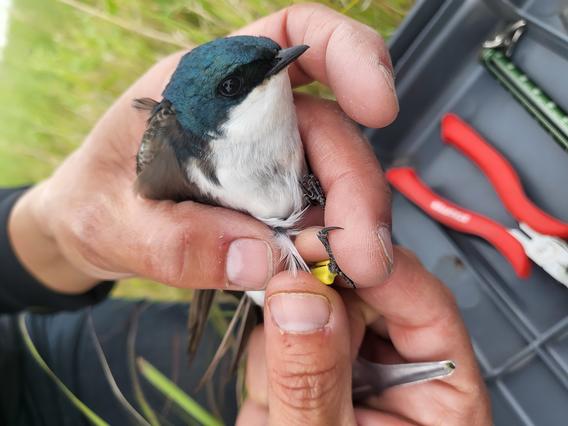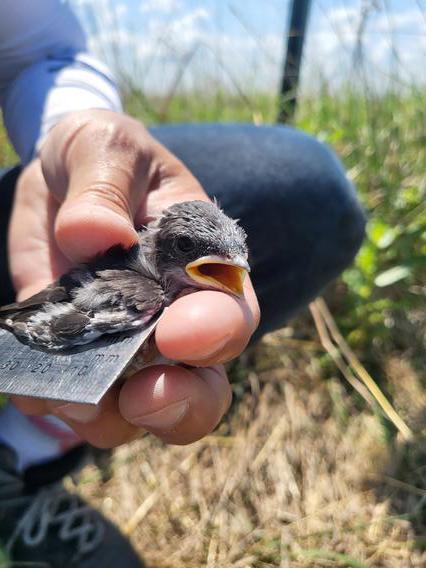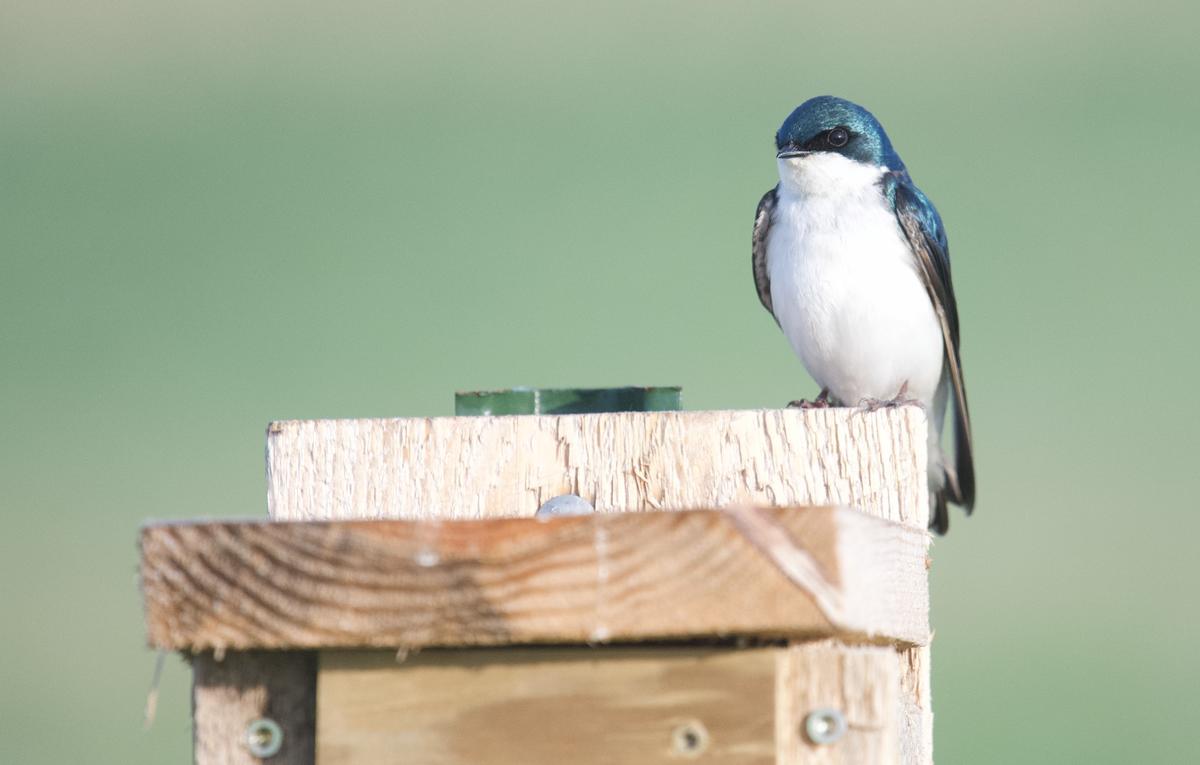There’s a good reason why so little is known about what, when and how many flying insects birds eat.
It’s just really hard to get the data. Let alone get enough data, over enough time, across different landscapes to really understand this seemingly simple question: What’s buggin’ Minnesota birds?
But that’s what NRRI scientists want to know. Specifically, are there fewer bugs available for birds to eat and how does that impact those bird species? The information is critical for land management decisions.
“There might be bird food deserts, such as in areas with high pesticide use, or maybe the birds are adapting their diet to whatever is there,” explained NRRI Avian Ecologist Alexis Grinde. “We just don’t know.”

Grinde and her team have been monitoring forest breeding birds for decades, which allows them to see trends in population increase and decrease. And they noticed that, over the past 15 years aerial insectivore birds have been in decline.
Meanwhile, NRRI Entomologist (a scientist who studies bugs) Valerie Brady had read about a “bug apocalypse” in Europe and noticed fewer bug splatters on her car windshield in recent summers. Do we have a similar trend of decreasing bugs in the U.S.? A literature review revealed scant information.
“If we have a bug problem, it will show up in bird fledgling success,” said Brady. “That’s crunch time for birds needing lots of insects of the right size and at the right time.”
So they put together an initial two-year study proposal that was funded by the Legislative Citizen Commission on Minnesota Resources (LCCMR) which is wrapping up this year. Hoping to build on their findings, Grinde is poised to find more funding and Brady will extend the insect identification portion of the study.
“We did a lot of work to get this study set up – getting landowner agreements and nesting boxes with monitoring devices in place,” she said. “For this first study, we’re getting an amazing amount of information, but it would be great if we could keep it going another year.”
Understanding Insects

Studying terrestrial insects is new to NRRI’s aquatic macroinvertebrates team. The biggest challenge is that there are hundreds more insect species in the air and on the ground than in water systems.
Rather than try to learn a whole new taxonomy – order, family, genus, species – they used a simplified key to identify only order and family. For example, both moths and butterflies are in the order Lepidoptera, each in a different family with hundreds of species each.
“When we sample aquatic insects we usually get about 150 bugs to identify,” said Kari Pierce, NRRI water lab technician. “Samples collected for this project gave us thousands.”
And collecting those samples, of course, is quite different. They used a science-standard window pane trap and modified it for their purposes. Made of clear plexiglass, it does not entice insects to it, just captures what is passing by and preserves them in propylene glycol (RV antifreeze). They also use butterfly nets to do standardized “sweeps” over vegetation to capture other insects.
The team had to develop a unique process to measure the biomass of each order, clustered together and photographed, then the area will be measured using imaging software to provide an estimate of biomass to capture the amount of food available to the birds.
For the Birds

The avian researchers chose to study tree swallows for this project because they are nest box dwellers, which could be deployed where the researchers can get to them and more easily track bird activity.
To understand how land use affects both the prevalence of insects and productivity of the swallows, the scientists identified three landscape scenarios in western Minnesota: farmland, prairie grasslands and areas of 50/50 mix of both. The study sites reach from the town of Benson in the south up to Thief River Falls in the north.
A total of 144 nest boxes were set up across the study areas, a subset were outfitted with microcomputers that collect information about when tagged birds fly in and out of the box. An antenna circles the opening and a radio frequency identification barcode to scan each visit.
“Previously, someone would have to sit outside each nest box and count the birds going in and out, using the RFID technology allows us to get much more data over a longer timeframe” said Grinde. “And the RFID tags are very small, so we’re not hurting the birds at all. Our team made and programmed the RFID readers, and that’s very cool.”
The scientists also collected feces samples which will be analyzed using eDNA technology

to document what the birds are actually eating. When babies hatch, the nestlings are carefully and quickly weighed and measured.
“Tree swallows can lay three to seven eggs in each clutch and their success all depends on the female,” Grinde said. “She needs to arrive on the breeding ground in good condition and food needs to be available.”
Coming Together
Using the insect data to understand what food is available in each landscape scenario and combining it with the feces data that shows what the birds are actually eating will provide volumes of new information.
“This is a new way of looking at why some bird species are in decline,” said Grinde. “Insects are the base of the food web – from frogs to bats and birds. There could be a lot of practical things we can do to mitigate what’s happening to insects.”
Brady acknowledged that it’s hard to get people to care about bugs.
“Who cares? Well, the birds care. And if they fall off the food chain, what’s next?” asked Brady. “You can’t have major declines in one whole massive group of organisms and think that nothing else will be affected.”
Funding for this project was provided by the Minnesota Environment and Natural Resources Trust Fund as recommended by the Legislative-Citizen Commission on Minnesota Resources (LCCMR).
